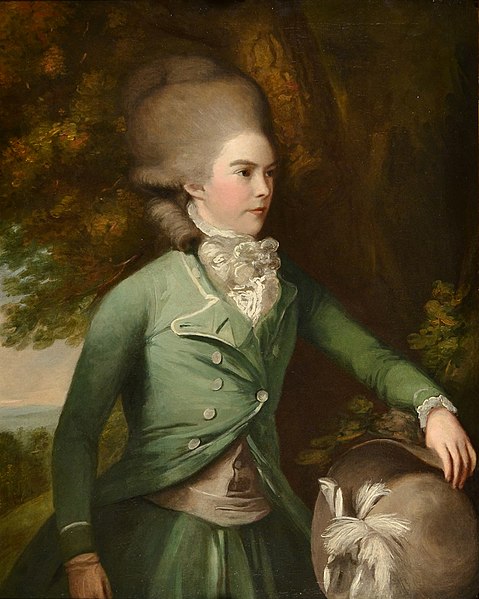Lately I’ve been working on a waistcoat to go under my Snowshill riding habit. I really love the look of this menswear inspired style, but before jumping in, I needed to take a closer look at the evolution of the waistcoat throughout the 18th century.
Ladies throughout the 18th century appeared to wear riding habit jackets both buttoned up closed or open over a matching or complimenting waistcoat, as shown above (1740). The waistcoat shape changed throughout the century, as of course the coats atop them did – some had very large skirtings, and some had no skirts at all:
Large-Skirted Waistcoats (1740s – 1760s)
Short-Skirted Waistcoats (1770s – 1780s)
 |
| Cesare Augusto Detti, “The Amazon of Perugia” – this is a late Victorian genre painting, but shows the short-skirted waistcoat styles |
 |
| Joseph Kreutzinger, Marie Antoinette im roten Jagdkostum, 1771 |
Skirt-less Waistcoats (1770s – 1790s)
As you can see, there is overlap.
For my riding habit, my date range is 1730 – 1750, so I’ll be going with a skirted waistcoat. My efforts thus far have not worked out (that’s for a later post), but I think I’ve finally got the pattern *just right,* so will be making up the final version in ivory taffeta, with a linen back. Silver trim is a maybe. Onward!
Like this:
Like Loading...

















7 Comments
Alexa
February 5, 2014 at 1:19 AMThis is amazing, thank you for posting! I've been looking into making a riding habit for the 1750s but it's so hard to find extant waistcoats to pattern off of!
Johanna
February 5, 2014 at 7:04 AMI'm also going to start on a redingote/waistcoat ensemble, and I'm thinking about simply using a men's waistcoat as a starting point, since there are plenty of those around. I'm going for the skirtless, late style though.
Lauren Stowell
February 5, 2014 at 7:37 AMIt's a good idea. You'll need to do either a dart or curvaceous front edges to accommodate the bust, but that's really the only difference in the skirt-less ones.
Lauren Stowell
February 5, 2014 at 7:38 AMSorry, that was vague – the horizontal dart over the bust, like on the riding habit in Patterns of Fashion 1.
M'lady
February 5, 2014 at 9:54 AMI love riding habit styles especially form that era. It always looks so stylish and practical.
Anonymous
September 26, 2014 at 9:51 PMThese images are great, thank you for the references. I am thinking of doing a skirt-less riding habit circa 1770's. Thinking in terms of undergarments, would women still have worn their stays underneath the vest & waistcoats? I assume so since many images still have that conical shape that the stays provide, but couldn't find any sources to verify. Thanks!
sam b
January 14, 2018 at 6:27 AMI'm wondering…the brown waistcoat could be for an older boy, still slim in the torso, so not needing the CF edges curved, and explains the total lack of darts. I've done some costume sewing for tween-aged boys (mostly coats), and sometimes had to adapt women's patterns for them, and that vest looks much like their body-types…and the diagonal sag-lines match what I see when I try on those coats 😛
Also, a question: would a lady really go riding with side-hoops or a false bum, or would those only be worn with outfits like at the "picnic" painting above–looks like a habit, but never really worn on horseback?